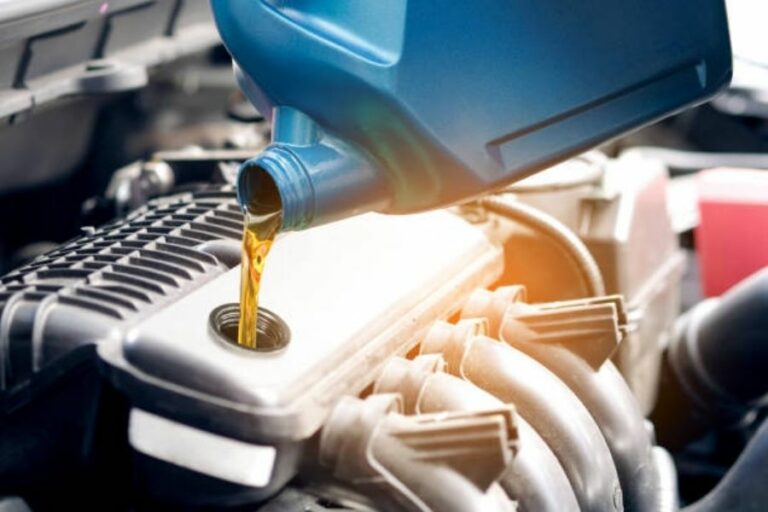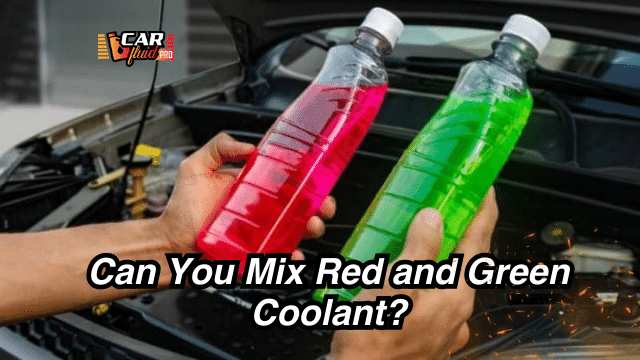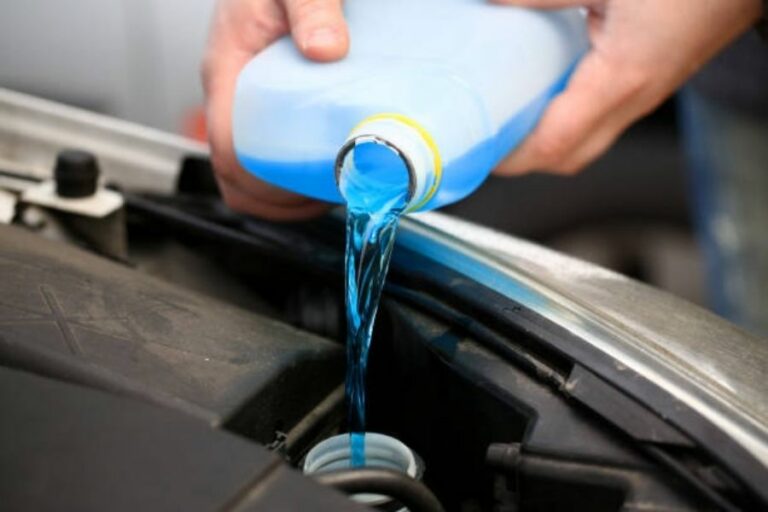Low Coolant Light Comes On and Off – Reasons and Solutions
You may get confused by noticing a low coolant light comes on and off even after filling the coolant tank and cleaning the radiator. A flashing low coolant light will not welcome immediate dangers; stopping the car is mandatory to identify and solve the problem.
Malfunctioning coolant sensors, cold weather, damaged thermostat, coolant leaks, etc., are a few reasons for blinking coolant lights. Don’t feel helpless and clueless when such an incident happens. Such problems can easily be solved.
Continue reading to enlighten yourself.
What are the Reasons Low Coolant Light Comes On and Off?

Several reasons are responsible for the low coolant light turned on and off the problem. In this case, the first thing you will need to do is, check the coolant level. If the level is accurate, the following are the culprits.
1. Malfunctioning Coolant Sensor
The primary responsibility of the coolant sensor is to measure the level and signal to the car computer to turn the light on or off.
Your vehicle’s fuel efficiency can be reduced due to a damaged coolant sensor. You can also get improper emission readings.
If the coolant tank is still full, but the coolant light is blinking, be sure that the problem lies with the coolant sensor. When the sensor malfunctions, it will send the wrong information to the dashboard.
You can easily tell this by looking at the coolant bottle. However, coolant sensors wear and tear over time. So it can signal incorrectly.
In addition, a possible loose connection is another reason behind it. So, let a professional mechanic check the connection and repair it as needed.
2. External Coolant Leaks
Catching external coolant leaks is easy. If the leaks get bad enough, your car’s coolant level will go down dangerously and trigger the coolant light to turn on and off.
Generally, when external coolant leaks happen, you will notice puddles or drippings of coolant beneath the car. However, this is only sometimes the case.
The external parts of a car’s cooling system are the heater core, radiator, O-rings, water pump, hoses, etc. When leaks, holes, cracks, splits, etc., occur in this part, coolant will escape from the tank.
If you find liquid underwater, inspect the root cause. Differentiating coolant from other liquids, such as transmission, steering, or brake fluids, is effortless. Coolants have a watery consistency.
Also, they come in different colors, including yellow, orange, red, blue, green, etc.
3. Internal Coolant Leaks
This is the first sign when your low coolant light turns on and off. Detecting or diagnosing these leaks is challenging.
Sadly, internal coolant leaks won’t leave any marks or tell-tale puddles on your driveway. The reason is these leaks are found inside the coolant systems parts.
Examples of possible internal coolant leak locations are a crack case, engine cylinders, intake manifold, cylinder gasket, etc.
The coolant may mix with the fuel or burn with the air based on the leak’s location. Such a scenario creates a devastating or lasting effect on the car engine.
For this reason, taking prompt action is a must when you experience low coolant light coming on and off.
4. Incorrect Coolant Used
When refilling the coolant tank, ensure it is filled with the correct antifreeze type. Unfortunately, many car owners overlook it.
They don’t want to believe that using inappropriate coolant decreases the car’s performance. More dangerously, car parts can severely damage due to incorrect coolant used, causing expensive repairs.
Before refilling your vehicle coolant tank, learn the type by reading the manufacturer’s manual. Some cars require coolant with a high boiling point, while others provide good performance with a low boiling point. Correct coolant type will help your car engine to run at the right temperature. It can also prevent coolant sensor triggering.
So, buying the right coolant for your vehicle is significantly important. If you don’t know what to buy, thoroughly read the car manual.
5. Low Coolant Level
The antifreeze level sensor is available in the coolant expansion tank. When the level of the coolant is below the sensor, the low coolant warning light may trigger. Even after refilling the coolant tank, wait for a few minutes to settle down. Then check the level.
Now, the coolant level can be lower for several reasons, like cracks or leaks in the internal and external cooling system parts.
When the coolant level is lower than required, check for leaks and repair if necessary. Top up the coolant tank and turn the vehicle on.
6. Cold Weather
The coolant fluid tends to contract when your car is parked at freezing temperatures. Such tightening of antifreeze causes the low coolant sensor to come on.
In this case, checking the coolant level is the first thing to do. If a low level is identified, refilling with the required coolant becomes necessary. It brings coolant consistency back.
7. Bad Thermostat
Every car is designed with a thermostat. It aims to regulate the temperatures throughout the vehicle. Now, this crucial component can go bad over time.
When the thermostat is opened, your car’s temperature will reduce. Here the reason is the coolant flows freely throughout the coolant system parts without any bars within the system.
Another condition is the thermostat is stuck in a closed position. In such conditions, the thermostat resists the flow of coolant, causing overheating of the car engine.
These complications are the reason behind faulty readings of the coolant. As a result, the low coolant light turns on and off.
First, diagnose the thermostat and replace it, if required. Also, make sure to buy the correct size thermostat for your car.
What to do If the Low Coolant Light Comes On and Off?
You mustn’t drive your car when the low coolant light blinks on the dashboard. Turning on and off low coolant light means your vehicle engine is running at a high temperature, and prompt attention is necessary.
If you don’t stop driving and overlook the problem, you are leading your car engine to permanent damage. So, stopping and cooling the vehicle to diagnose the problem will help you find the root cause.
Before diagnosing:
- Make sure the engine is cool enough.
- If not, leave it for a minimum of 30 minutes.
- Don’t open the coolant reservoir or the radiator cap when the engine is hot.
Pressurerized and hot steam will blow out from the engine and may burn you.
Once the engine reaches normal temperature, open the reservoir cap of the coolant slowly. Don’t do anything, and keep the cap open for a few minutes. Thus, the remaining pressure from the engine can be released.
After a few minutes, check the level of the coolant. If the level is low, top up with the recommended coolant.
Then look for any possible leaks in the hoses and reservoir. Although, finding leaks can be challenging for an average person. However, call a professional mechanic for repair if you find any cracks, leaks, or damages.
You are ready to continue your journey if there is no leak and the low coolant light has turned off completely.
But keep an eye on the dashboard as the low coolant light may return.
FAQs
Can I drive with a low coolant light turned on and off?
Technically, you can drive a maximum of 1 to 2 miles with a low coolant light turned on and off. Remember that doing so can lead you to an unwanted accident. Your car engine will start overheating, and the temperature gauge will keep increasing. Such a condition can damage your vehicle engine permanently. So, avoiding driving your car with a flashing low coolant light is always best. Check your car, top up the coolant tank if required, and then drive.
How long can you drive with a low coolant light turned on and off?
Although it is not recommended to drive your car when the low coolant light flashes on the dashboard, in case of urgency, you can drive it for 5 – 15 minutes to get to the safest place.
What is the next step if your low coolant light blinks while driving?
First, turn off your car engine even if you are a few miles away from your destination. Remember to park in a safe place. Then let the engine cool. Once cooled, check the coolant level in the tank. For low levels, top up the coolant tank. Avoid working with a heated engine. It can burn you. After topping up, turn the engine on and drive to your nearest mechanic shop for inspection.
Final Words
So, when you notice a low coolant light comes on and off in your car dashboard, look at the possible enlisted causes for a proper inspection.
A car owner shouldn’t overlook minor car issues as they can cause an unwanted accident. Looking at the problem on time is always beneficial to keep your car health optimum.
Read Also:




![Can You Mix Prestone Antifreeze With Dexcool? [Compatibility]](https://carfluidpro.com/wp-content/uploads/Can-You-Mix-Prestone-Antifreeze-With-Dexcool-768x512.jpg)

